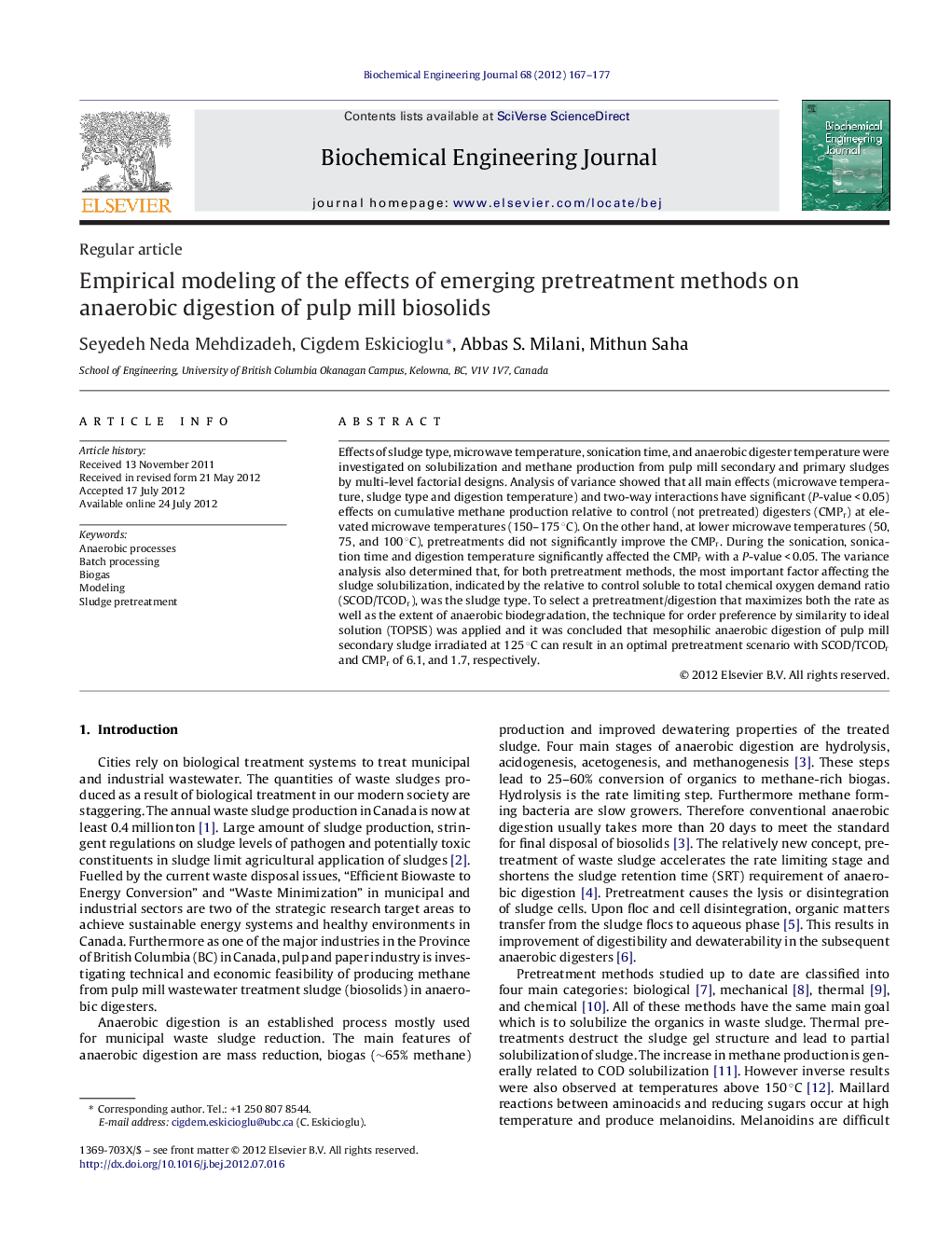| Article ID | Journal | Published Year | Pages | File Type |
|---|---|---|---|---|
| 3486 | Biochemical Engineering Journal | 2012 | 11 Pages |
Effects of sludge type, microwave temperature, sonication time, and anaerobic digester temperature were investigated on solubilization and methane production from pulp mill secondary and primary sludges by multi-level factorial designs. Analysis of variance showed that all main effects (microwave temperature, sludge type and digestion temperature) and two-way interactions have significant (P-value < 0.05) effects on cumulative methane production relative to control (not pretreated) digesters (CMPr) at elevated microwave temperatures (150–175 °C). On the other hand, at lower microwave temperatures (50, 75, and 100 °C), pretreatments did not significantly improve the CMPr. During the sonication, sonication time and digestion temperature significantly affected the CMPr with a P-value < 0.05. The variance analysis also determined that, for both pretreatment methods, the most important factor affecting the sludge solubilization, indicated by the relative to control soluble to total chemical oxygen demand ratio (SCOD/TCODr), was the sludge type. To select a pretreatment/digestion that maximizes both the rate as well as the extent of anaerobic biodegradation, the technique for order preference by similarity to ideal solution (TOPSIS) was applied and it was concluded that mesophilic anaerobic digestion of pulp mill secondary sludge irradiated at 125 °C can result in an optimal pretreatment scenario with SCOD/TCODr and CMPr of 6.1, and 1.7, respectively.
► Microwave and ultrasound improve anaerobic digestion of pulp mill waste sludge. ► Pretreatment intensity, digester temperature, sludge type statistically significant. ► Microwave at 125 °C and mesophilic digestion achieve optimum disposal scenario.
